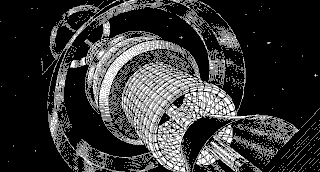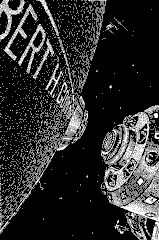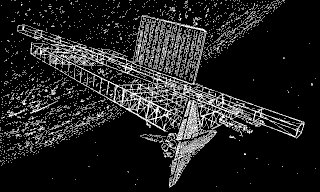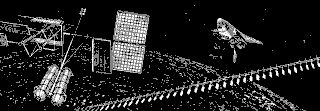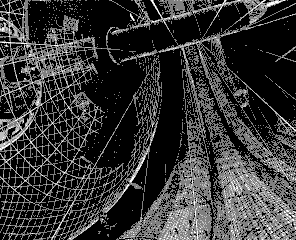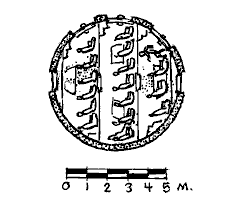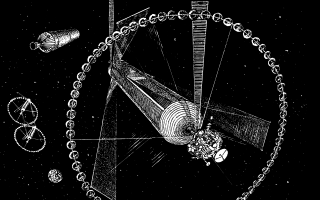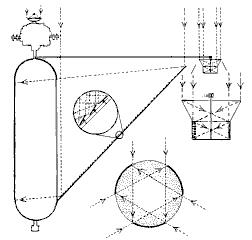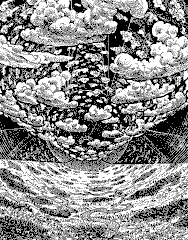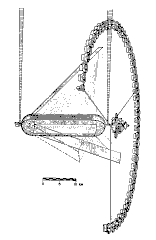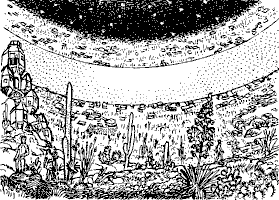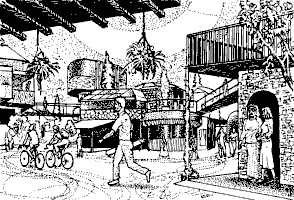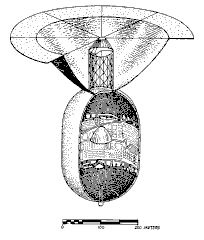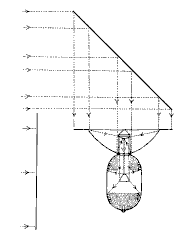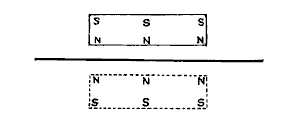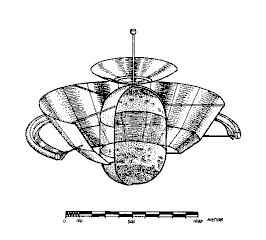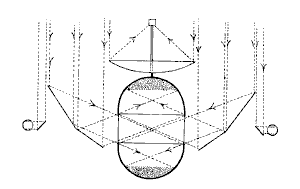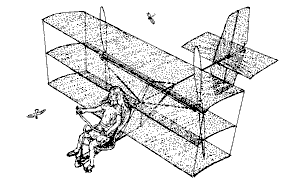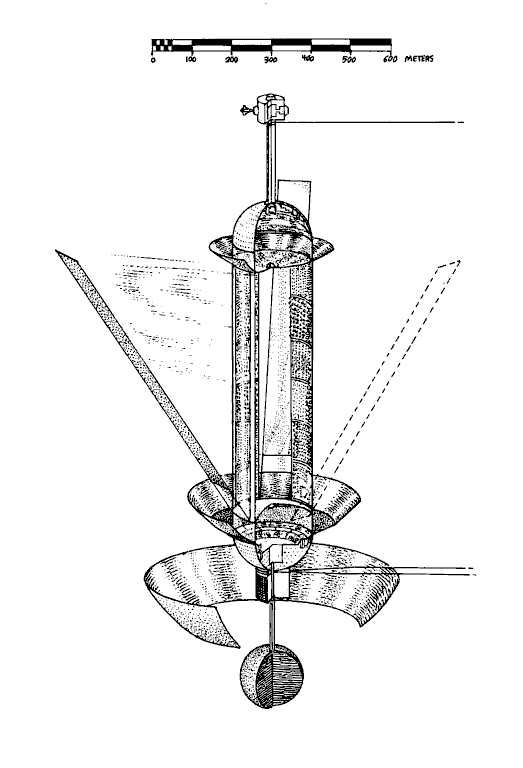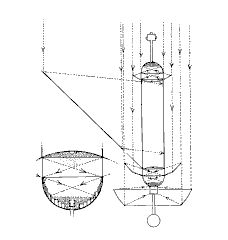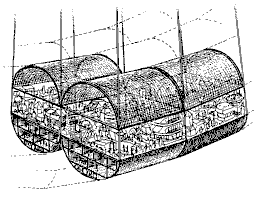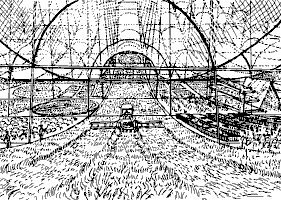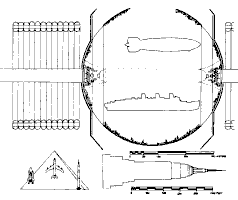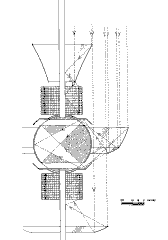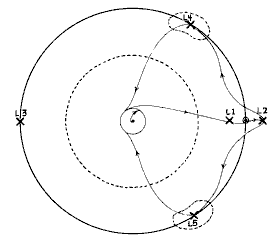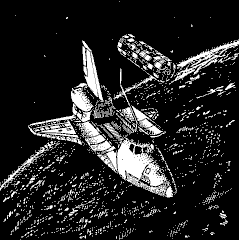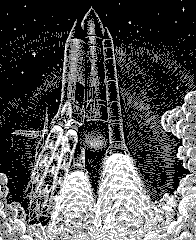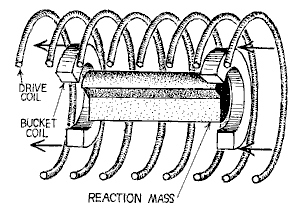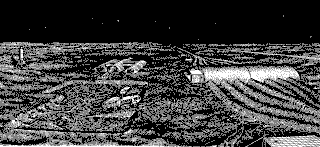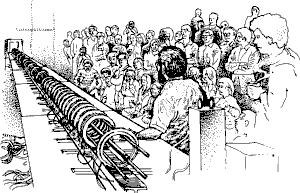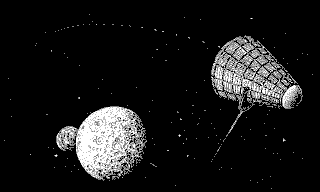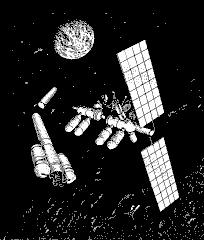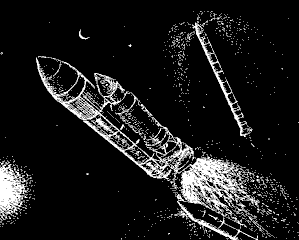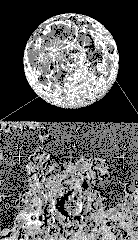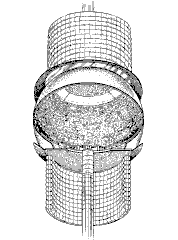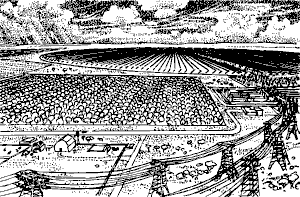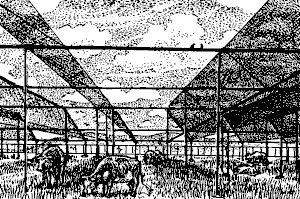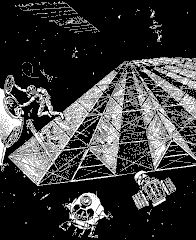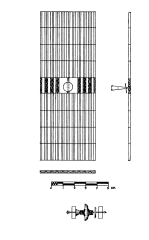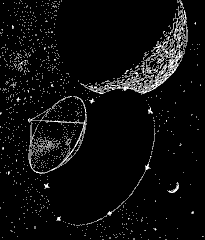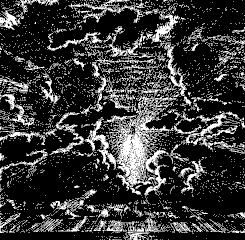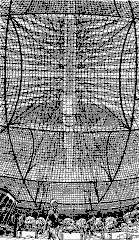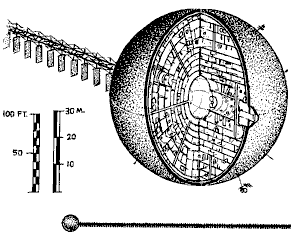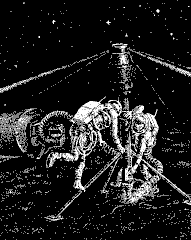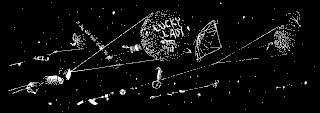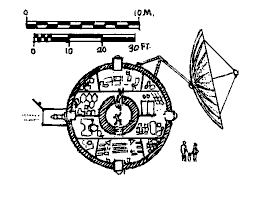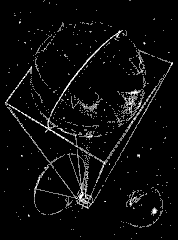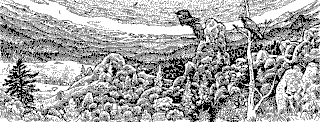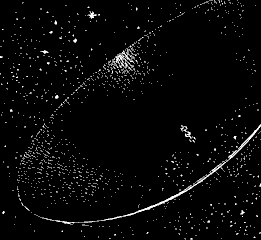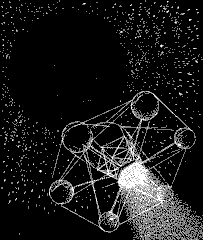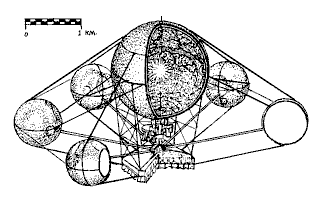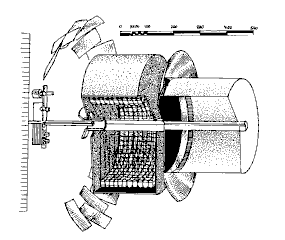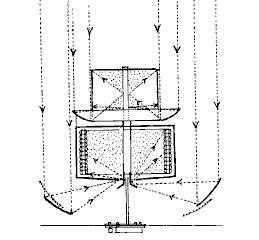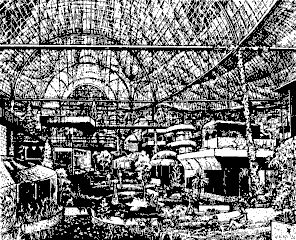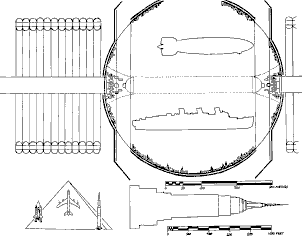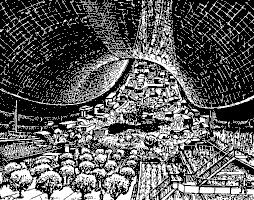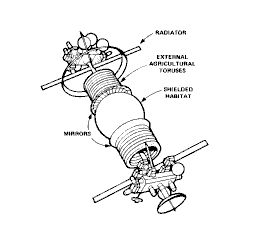Noted space artist Don Davis did all the illustrations in the first and second editions of The High Frontier
Here now is all of the artwork he created, giving us a vivid glimpse of the future envisioned by O’Neill.
All images copyright Don Davis
Approaching Island One. Mirrors collect sunlight for farms and shielded living areas. Foreground panels radiate waste heat.
The Robert H. Goddard, a transfer ship, docks at Island One. Arriving passengers will float through transfer corridor, then walk down to normal gravity.
First normal-gravity habitat and workshop in space, for pilot-plant operations in low orbit.
Island Three, with agricultural modules (small cylinders on ring) and zero-gravity industries (assemblage on end of cylinder).
Sunlight paths in Island Three and in its external farm modules.
Island Three. Variable mirrors allow changing angle of sunlight during each day.
Sunflower habitat, this one designed for Southwestern Desert landscape.
Magnetic flight. Fast-moving magnet induces image poles in conducting surface, producing lifting force.
Sunflower geometry. Light enters at equator; external wheel is for agriculture.
Human-powered aircraft concept, for use in axial region in low gravity.
Shielded “Model One,” an early habitat design with farms in cylinder valleys, living areas in shielded end-caps.
Modular habitat using shuttle external tank, for early rapid buildup of space manufacturing. Hydrogen tank is split into 7 levels, with each divided into 3 pie-wedge-shaped compartments, providing a total of 21 apartments for as many people.
Multiple-wheel “Crystal Palace” with cables to rotation axis gives maximum sunlit normal-gravity area for lowest mass.
Multiple wheel geometry. Used in Crystal Palace for living and farming areas, and in Island One farms.
Island One, with the Queen Mary, Hindenburg, Empire State Building, Saturn 5, and Great Pyramid for scale.
Sunlight paths in Island One. The design goal is to admit sunlight into the interior without providing a straight-line path for cosmic rays past the radiation shielding. External screens permit separate day/night cycles in living and farm areas.
The five Lagrange points of the Earth-Moon system. Inner circle is geosynchronous orbit; dashed circle is possible colony orbit.
Shuttle places Long Duration Exposure Facility, seventy experiments to be left in Earth orbit for a year. (This particular vision became a reality in April of 1984. The LDEF was actually left in orbit closer to 6 years due to the intervening Challenger accident.)
Launch of shuttle-derived heavy-lift vehicle (HLV). Large external tank carries all fuel for main engines.
Rocket-powered lander delivering equipment to lunar surface.
Mass-driver: Current in drive coils makes magnetic field that pushes on currents in bucket coils, giving acceleration.
Lunar mine and mass-driver. Crew habitat and machinery tunnels covered by lunar soil for shielding.
Path of lunar material to second Lagrange point. This stream can almost be thought of as a “mass pipeline”.
Stream of payloads leaving lunar mass-driver. The payloads would probably be in the form of spheres of sintered lunar soil about the size of a softball.
Mass receiver at Lagrange point L2, beyond lunar farside. The receiver has its own mass-driver reaction engine, which it will use to propel the load from L2 to an Earth orbiting ore refinery.
Workshop in lunar orbit. Power supplied by solar-cell arrays.
Moment of separation, as solid-rocket boosters drop from shuttle-derived freight vehicle to be recovered by parachute.
Possible site for lunar mass-driver, near boundary of mare and highland regions, for greater choice of minerals.
Cutaway view of Island One. Axial cylinder is air passage and corridor to docks and industries in zero gravity.
Electricity from SPS ground antenna flows to regional grid day and night, in all weather.
Antenna is transparent to sunlight and rain, but absorbs microwaves, leaving fields below safe for cattle.
Power satellites in twenty-four-hour orbit stay in constant sunshine above fixed point on Earth.
Assembling solar panel arrays and concentrating mirrors of power satellite.
Satellite power station, nearing completion at Island One. Central antenna sends power to receiver on Earth.
“Cyclops” is a SETI proposal for a vast intelligence-seeking radio telescope. This dish antenna, several kilometers across, was also built at Island One. Its metal shield blocks interference from Earth radios. Conventional wisdom is that such an extraterrestrial array should be built on the lunar farside, but this orbital dish offers the advantage of being freely pointable at any target at any time.
Night launch of shuttle. With solid boosters and main engines burning, Orbiter lifts through first cloud layer. It was hoped that the shuttle would be the workhorse of the high frontier, but we still await an Earth-to-orbit launch system offering the lowered lift costs originally promised for the shuttle.
The Robert H. Goddard, a space-vessel for two thousand passengers. Mass-driver engine is powered by solar-cell arrays.
Orchards and farm buildings in agricultural areas of Island One.
Deck layout of R. H. Goddard. Rotation gives Earth-normal gravity in lowest levels.
Recovery of asteroidal chunks by twin-engine mass-driver tug.
Homebuilt spacecraft carries family on homesteading voyage to the asteroids.
Cross-section through the Lucky Lady. To propose that a group of families here on the Earth’s surface might build their own space craft to fly them to the Asteroid Belt would be laughable. For a family already living in High Earth Orbit, it becomes a realistic possibility.
Formation of strong metal sphere by vapor deposition in vacuum and zero gravity. Coated surfaces have a mirror-like finish. Another example of an industrial process impractical on the Earth’s surface, but practical in space. Such techniques may make the creation of the pressure vessels for orbital habitats much simpler and less labor-intensive than the kind of construction methods our Earth-bound experiences would suggest.
Island Two habitat of the year 2100, mainly forested, gives refuge for endangered species.
Research town of Island One size, collecting faint sunlight, operates at the edge of the “continental shelf” beyond Pluto.
Unlike all else in “The High Frontier”, this drawing goes beyond near-term technology, depicts interstellar vessel (twenty-first and -second centuries).
Interstellar vessel of Island One size, ion-driven. Central arc substitutes for sunlight. Reaction of matter and antimatter gives power (twenty-first and -second centuries).
Crystal Palace or “Hatbox” gives maximum land area at normal gravity, for minimum mass of structure and shield.
Bernal Sphere (Island One) diagram (the central primary mirrors have been removed for clarity).

